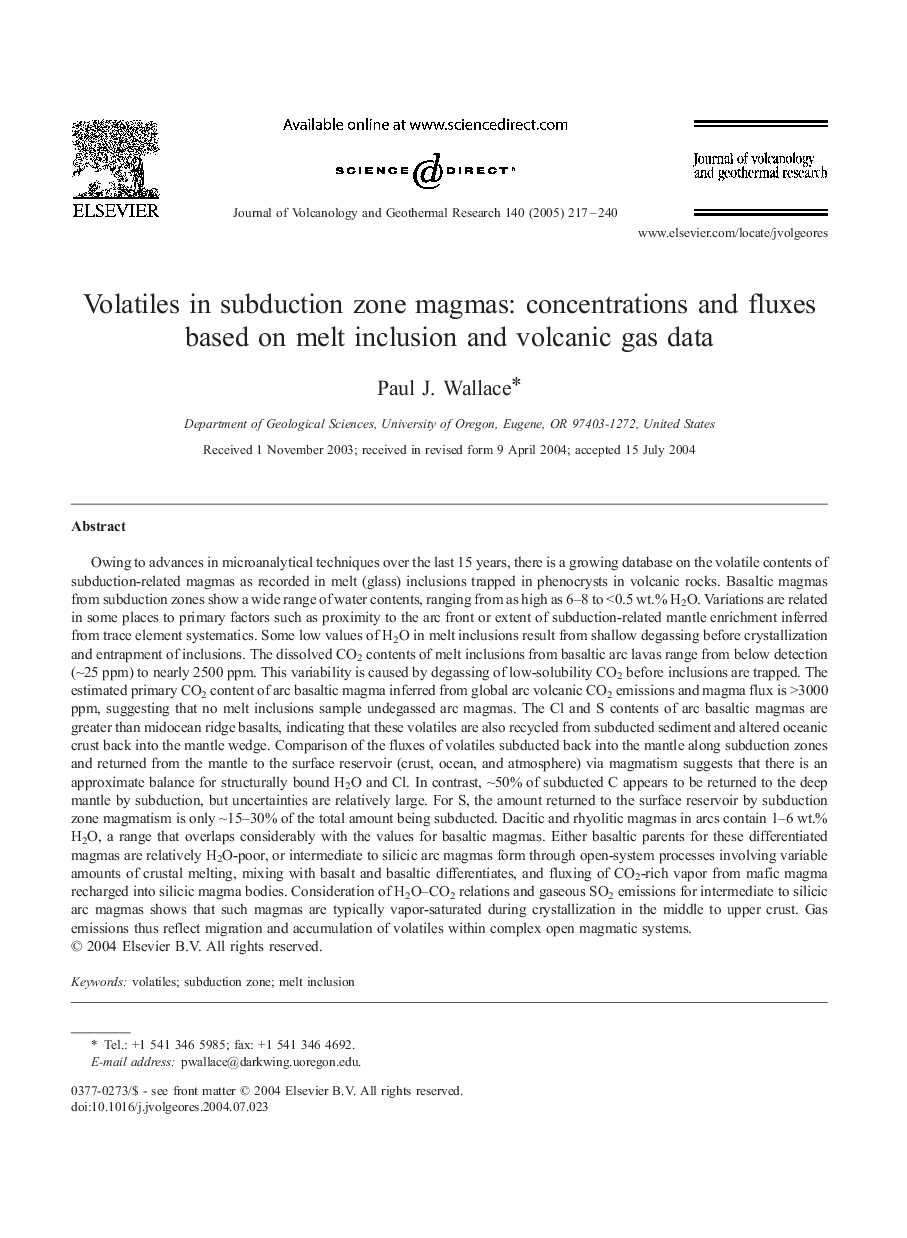| Article ID | Journal | Published Year | Pages | File Type |
|---|---|---|---|---|
| 9531158 | Journal of Volcanology and Geothermal Research | 2005 | 24 Pages |
Abstract
Owing to advances in microanalytical techniques over the last 15 years, there is a growing database on the volatile contents of subduction-related magmas as recorded in melt (glass) inclusions trapped in phenocrysts in volcanic rocks. Basaltic magmas from subduction zones show a wide range of water contents, ranging from as high as 6-8 to <0.5 wt.% H2O. Variations are related in some places to primary factors such as proximity to the arc front or extent of subduction-related mantle enrichment inferred from trace element systematics. Some low values of H2O in melt inclusions result from shallow degassing before crystallization and entrapment of inclusions. The dissolved CO2 contents of melt inclusions from basaltic arc lavas range from below detection (â¼25 ppm) to nearly 2500 ppm. This variability is caused by degassing of low-solubility CO2 before inclusions are trapped. The estimated primary CO2 content of arc basaltic magma inferred from global arc volcanic CO2 emissions and magma flux is >3000 ppm, suggesting that no melt inclusions sample undegassed arc magmas. The Cl and S contents of arc basaltic magmas are greater than midocean ridge basalts, indicating that these volatiles are also recycled from subducted sediment and altered oceanic crust back into the mantle wedge. Comparison of the fluxes of volatiles subducted back into the mantle along subduction zones and returned from the mantle to the surface reservoir (crust, ocean, and atmosphere) via magmatism suggests that there is an approximate balance for structurally bound H2O and Cl. In contrast, â¼50% of subducted C appears to be returned to the deep mantle by subduction, but uncertainties are relatively large. For S, the amount returned to the surface reservoir by subduction zone magmatism is only â¼15-30% of the total amount being subducted. Dacitic and rhyolitic magmas in arcs contain 1-6 wt.% H2O, a range that overlaps considerably with the values for basaltic magmas. Either basaltic parents for these differentiated magmas are relatively H2O-poor, or intermediate to silicic arc magmas form through open-system processes involving variable amounts of crustal melting, mixing with basalt and basaltic differentiates, and fluxing of CO2-rich vapor from mafic magma recharged into silicic magma bodies. Consideration of H2O-CO2 relations and gaseous SO2 emissions for intermediate to silicic arc magmas shows that such magmas are typically vapor-saturated during crystallization in the middle to upper crust. Gas emissions thus reflect migration and accumulation of volatiles within complex open magmatic systems.
Related Topics
Physical Sciences and Engineering
Earth and Planetary Sciences
Geochemistry and Petrology
Authors
Paul J. Wallace,
